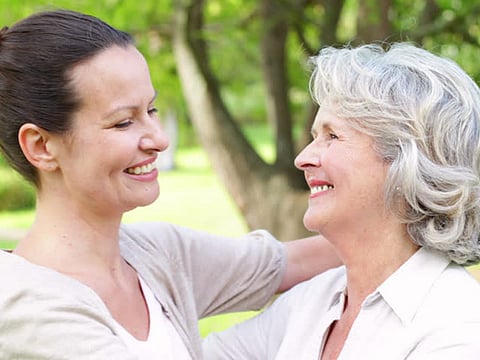Our mothers as we never saw them
What solace to know that time, ageing and motherhood cannot take away a woman’s essential identity

In one of my favourite photographs of my mother, she’s about 18 and very tan, with long, blond hair. It’s the 1970s and she’s wearing a white midriff and cutoffs. My dad is there, too, hugging her from behind, and from the looks of it, they’re somewhere rural — maybe some pastoral patch of small-town New Jersey where they met.
I haven’t seen this photo for years, I have no idea where it is now, but I still think of it — and, specifically, my mum in it. She looks really attractive. And she is so young and innocent. She hasn’t yet dropped out of college, or got married. The young woman in this photo has no idea that life will bring her five children and five grandchildren, a conversion to Judaism, one divorce, two marriages, a move across the country.
For me, as for many daughters, the time before my mother became a mother is a string of stories, told and retold: The time she got hit by a car and had amnesia; the time she sold her childhood Barbie to buy a ticket to Woodstock; the time she worked as a waitress at Howard Johnson’s, struggling to pay her way through her first year at Rutgers. The old photos of her are even more compelling than the stories because they’re a historical record, carrying the weight of fact, even if the truth there is slippery: The trick of an image, and so much left outside the frame. These photos serve as a visual accompaniment to the myths. Because any story about your mother is part myth, isn’t it?
After finishing my most recent novel, in part about mother-daughter relationships, I put out a call on social media for photos from women of their mothers before they were mothers. A character in the book, a young artist, does something similar, so I’d thought a lot about what the process might be like. I wasn’t prepared, however, for how powerful the images I received would be.
The young women in these pictures are beautiful, fierce, sassy, goofy, cool, sweet — sometimes all at once. I asked contributors to tell me about their mums or the photo submitted, and they often wrote that something specific and special about their present-day mother — her smile, say, or her posture — was present in this earlier version. What solace to know that time, ageing and motherhood cannot take away a woman’s essential identity. For daughters who closely resemble their mums, it must be an even bigger comfort; these mothers and daughters are twins, separated by a generation, and an old photo serves as a kind of mirror: How do I look? Even if there isn’t a resemblance, we can’t help but compare ourselves to our young mothers before they were mothers.
“I locate something of myself in the slope of her shoulders,” said one contributor, Molly. “This makes me feel adjacent to her coolness.”
Sometimes, too, a photo deepens the mystery of a mother. Emma, whose mum died when she was eight, says that she “cobbles together” an image of her mother from other people’s memories. “Those points only give an outline,” she writes, “let alone a shadow or full likeness of a person”. She’s heard plenty of stories about her mother’s childhood, and about her early years as a mother, but very little about the years after her mother graduated from college and before she got married. Emma calls this period her mother’s “lost years”. She notes that she, at the age of 29, is in that same phase of life now.
Many of us find a breezy toughness in the bygone versions of our mothers, and we envy it. Before a child or two tied her down, Mum was hitchhiking, or she was playing softball with the guys, or like Julia’s mum, she was “transcribing tapes from her time as a war reporter like it’s the most casual thing in the world”. Paria, whose mother fled Iran during the Revolution, notes her mother’s resilience; then, as now, her mum maintains a “joie de vivre” (exuberant enjoyment of life).
The photos women sent me offer a key to how we, as daughters, want to perceive young womanhood. Pluck, power, kindness, persistence: We admire and celebrate these characteristics, and we long for the past versions of our mums to embody them. But if these characteristics are a prerequisite for a properly executed womanhood, does becoming a mother divest a woman of such qualities? In studying these photos, and each daughter’s interpretation of them, I’ve come to wonder what traits we allow our mothers to have, and which ones we view as temporary, expiring with age and the beginning of motherhood. Can a woman be both attractive and maternal, daring and responsible, innocent and wise? Mothers are either held up as paragons of selflessness, or they’re discounted and parodied. We often don’t see them in all their complexity.
For daughters, these old photos of our mothers feel like both a chasm and a bridge. The woman in the picture is someone other than the woman we know. She is also exactly the person in the photo — still, right now. Finally, we see that the woman we’ve come to think of as Mum — whether she’s nurturing, or disapproving, or thoughtful, or delusional, or pestering, or supportive, or sentimental — is also a mysterious, fun, brave babe.
She’s been here all this time.
— New York Times News Service
Edan Lepucki is the author of the novels California and Woman No. 17.
Sign up for the Daily Briefing
Get the latest news and updates straight to your inbox


